Fitness
19 of the best triathlon watches reviewed – 220 Triathlon

Believe the claims and the right triathlon watch will have Alistair Brownlee and Lucy Charles- Barclay chasing your shadow.
The hyperbole is a turn-off for committed sceptics but wade through the marketing and, though they might not win you an Olympic gold, the right multisport watch certainly have you training smarter and racing faster.
Just be aware of the pitfalls. Many a triathlete has been lured into purchase by a long and ‘scientifically-proven’ features list only to realise a month later that 99% of its capability simply isn’t required.
If you’ve never used a heart rate monitor and are training for 3-4hrs a week, for example, will your triathlon performance benefit from spending upwards of £300 on a multisport watch that monitors your aerobic capacity, run cadence and cycling fatigue rating?
Also, remember that some of the metrics offered – ground contact time, for instance – are useful but arguably maximised by the intervention of a coach.
Then again, if you’re aiming for podium finishes, digging deep will be worth it. You’ll refine your training, resulting in greater gains for the same effort.
But beyond our test, do your own research to confirm the efficacy of many ‘performance-changing’ features that are on multisport watches. Take sleep tracking, which is primarily monitored by the user’s movement.
The gold standard requires measuring brainwaves and eye movement, which even a top-end Garmin or Suunto can’t do. Instead, watches or bands combine an accelerometer and an algorithm to estimate the quality and quantity of your sleep.
Recent Chinese research highlights just how inaccurate this method is.
Best triathlon watches in 2024
Garmin Fenix 7 Solar
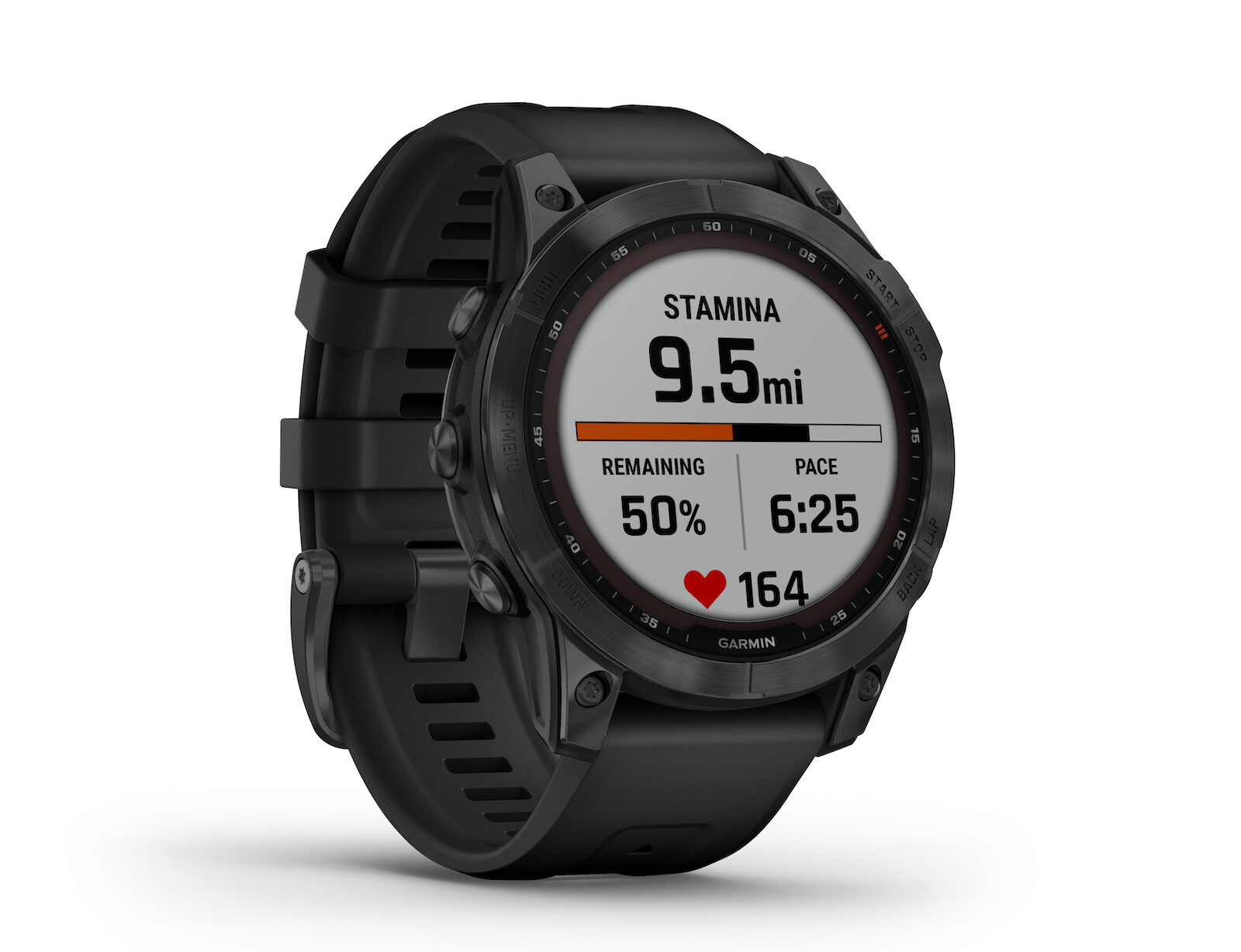
You can read our full review of the Fenix 7 Solar here, but in many ways this is the crème de la crème of multisport watches. Yes, it commands a high price, but it also packages up every feature you could want into a solid and robust package.
Battery life, boosted by the solar technology used here, is an impressive 22 days with sun and 18 without when in smartwatch mode, or hefty 57 hours in GPS mode (73 hours with sun).
The standout addition over past iterations is the Real-Time Stamina feature, which aims to tell you how much energy you have left at your disposal. It’s designed to help you pace better and I found it pretty accurate in testing.
You’ll also find a touchscreen that offers a responsive user-friendly experience, though you can turn it off and stick to buttons if you’d prefer.
Additional features include all the activity tracking and metrics you’d ever need, plus accurate GPS and heart rate tracking.
Verdict: Arguably the rating should be even higher, but you can’t ignore this is one hefty outlay.
Score: 89%
Garmin Forerunner 965
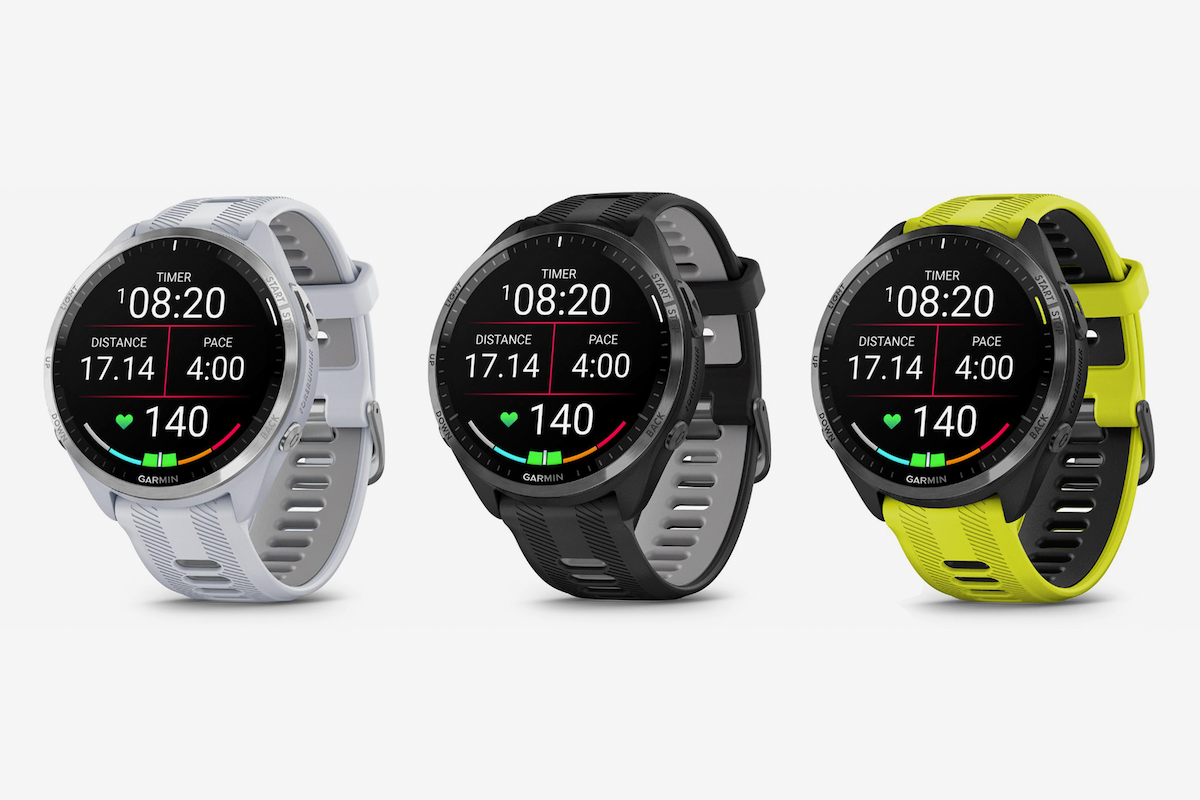

The Forerunner 965 builds on the already proven winning formula of the Forerunner 955, but brings several exciting updates.
Most notable is a new AMOLED screen, which is vibrant and easily readable, though it does have a knock-on effect on battery life.
To keep that impressive display always-on, you’re looking at up to a week of battery life (with around 6-7hours of GPS use). If you use it in the alternative mode, where it wakes up when it senses by movement, you’re looking at around 23 days of life in smartwatch mode.
Other updates include the Training Status feature being improved, plus additional running metrics.
Admittedly, the stupendously good screen would be the main reason you’d upgrade, but if your triathlon watch is a few years out of date, this would be a fantastic replacement.
Verdict: Expensive, but incredibly impressive. See our full Garmin Forerunner 965 review for more.
Score: 86%
Suunto Race
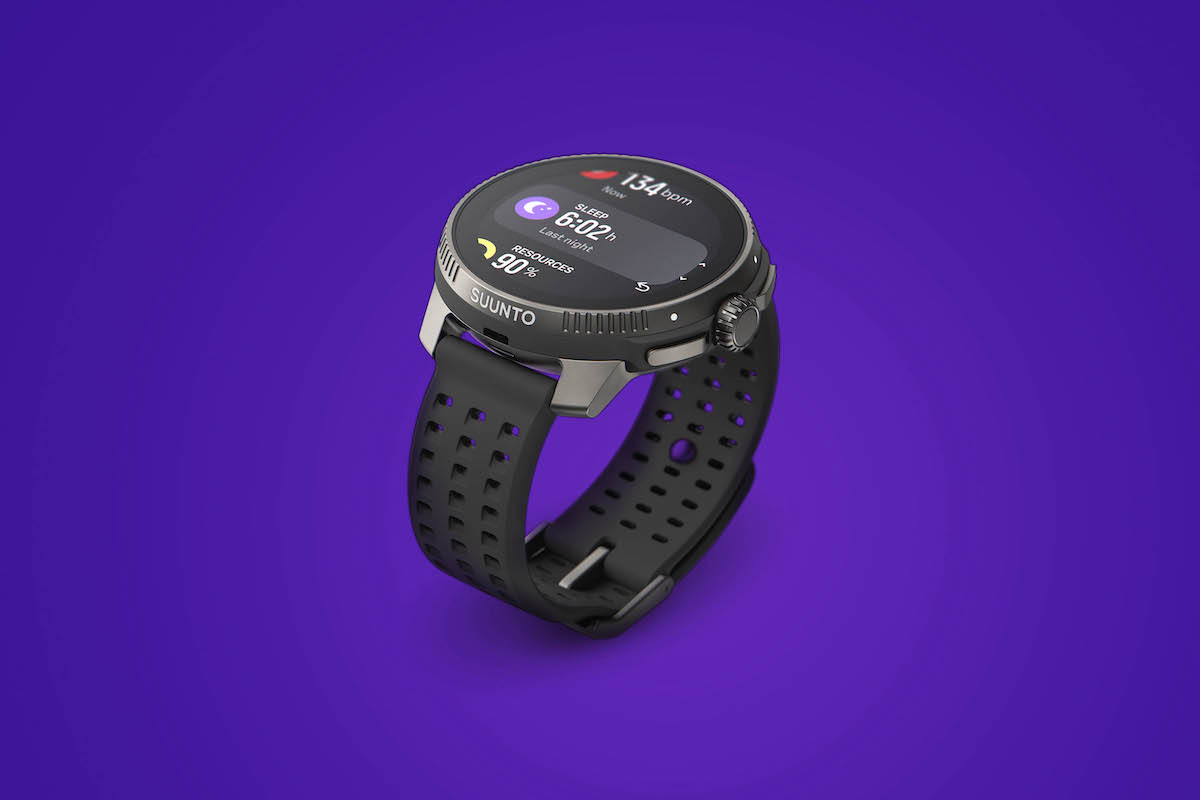

- £389 / $449 (stainless steel); £479 / $549 (titanium)
The Suunto Race has a lot going for it and is the brand’s best watch to date for athletes.
It’s usable, thanks to the combination of a touchscreen and three buttons, and has an impressive feature list.
Among them you’ll find heart rate variability, a useful metric that also steers many other training features on triathlon watches such as sleep quality, training stress score and training load.
There’s also mapping, which is complemented by 16GB storage on the steel version or 32GB on the titanium version, and these are downloaded via the intuitive Suunto app.
As you’d expect, you get a whole host of sport profiles to track, plus support for power meters.
Battery life is impressive, too, at 40 hours in GPS mode, which kept me going through multiple lengthy sessions and would easily deal with a full Ironman.
Verdict: Suunto’s best watch yet for athletes. Read our full Suunto Race review for more.
Score: 88%
Coros Vertix 2
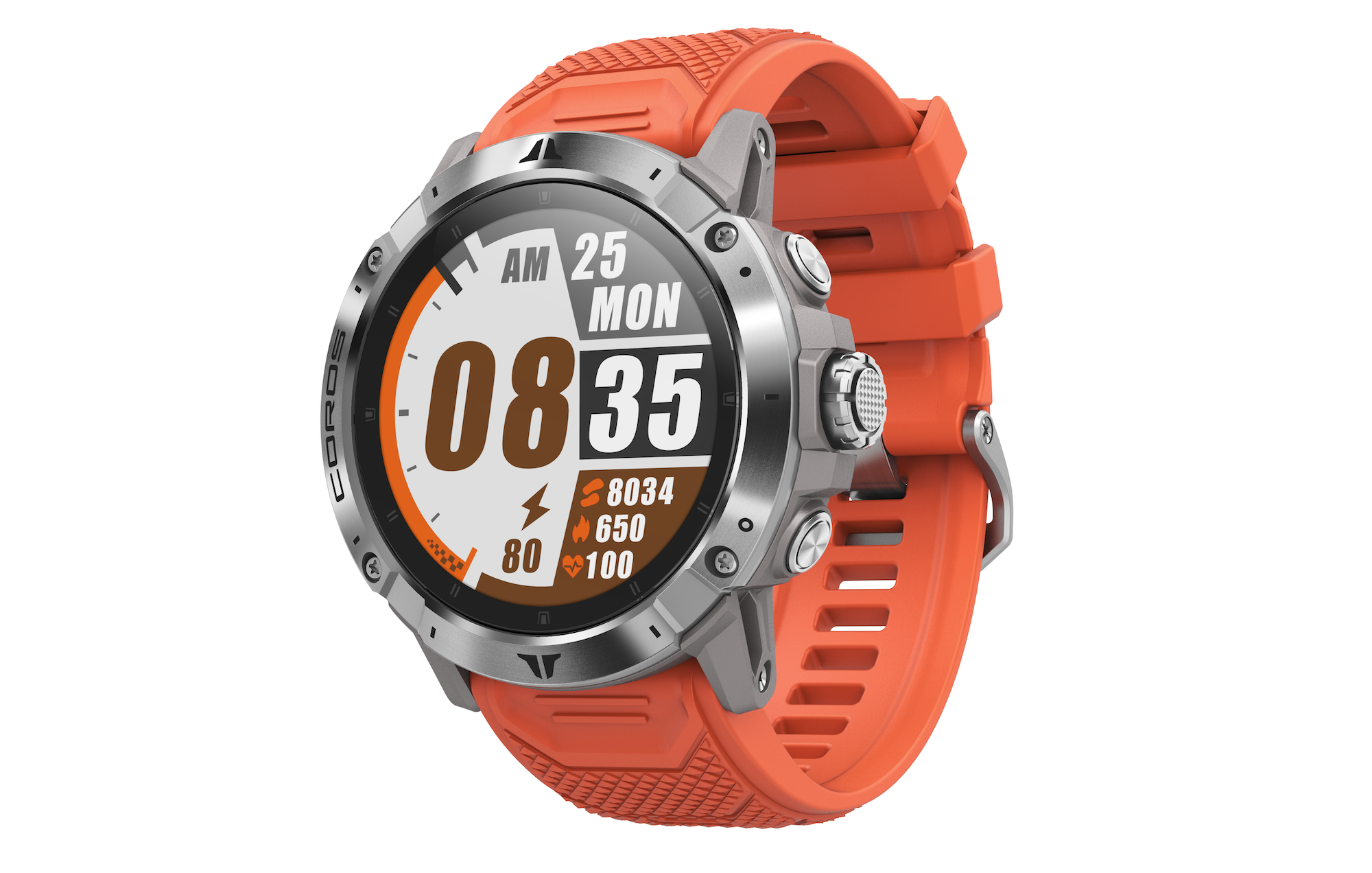

The Vertix 2 is essentially Coros’ rival to Garmin’s Fenix range. As such, it packs some impressive performance.
Chief among them is battery life, which reaches up to 140hrs in standard GPS mode or 50hrs in dual-frequency mode. That’s pretty damn impressive, and plenty of juice for even the slowest of long-distance athletes.
GPS pickup and accuracy proved impressive throughout testing, and there are literally dozens of activity profiles to choose from, including triathlon.
The rugged case looks primed to stand the test of time, but the display doesn’t quite reach the heights I’d have hoped, lacking the crispness of some similarly-priced competitors.
Meanwhile, the touchscreen and dial proved easy to operate, and the accompanying app is both clean and useable.
Verdict: Packed with features and solid GPS, but not quite a home run. See our full Coros Vertix 2 review for more.
Score: 77%
Garmin Forerunner 955 Solar
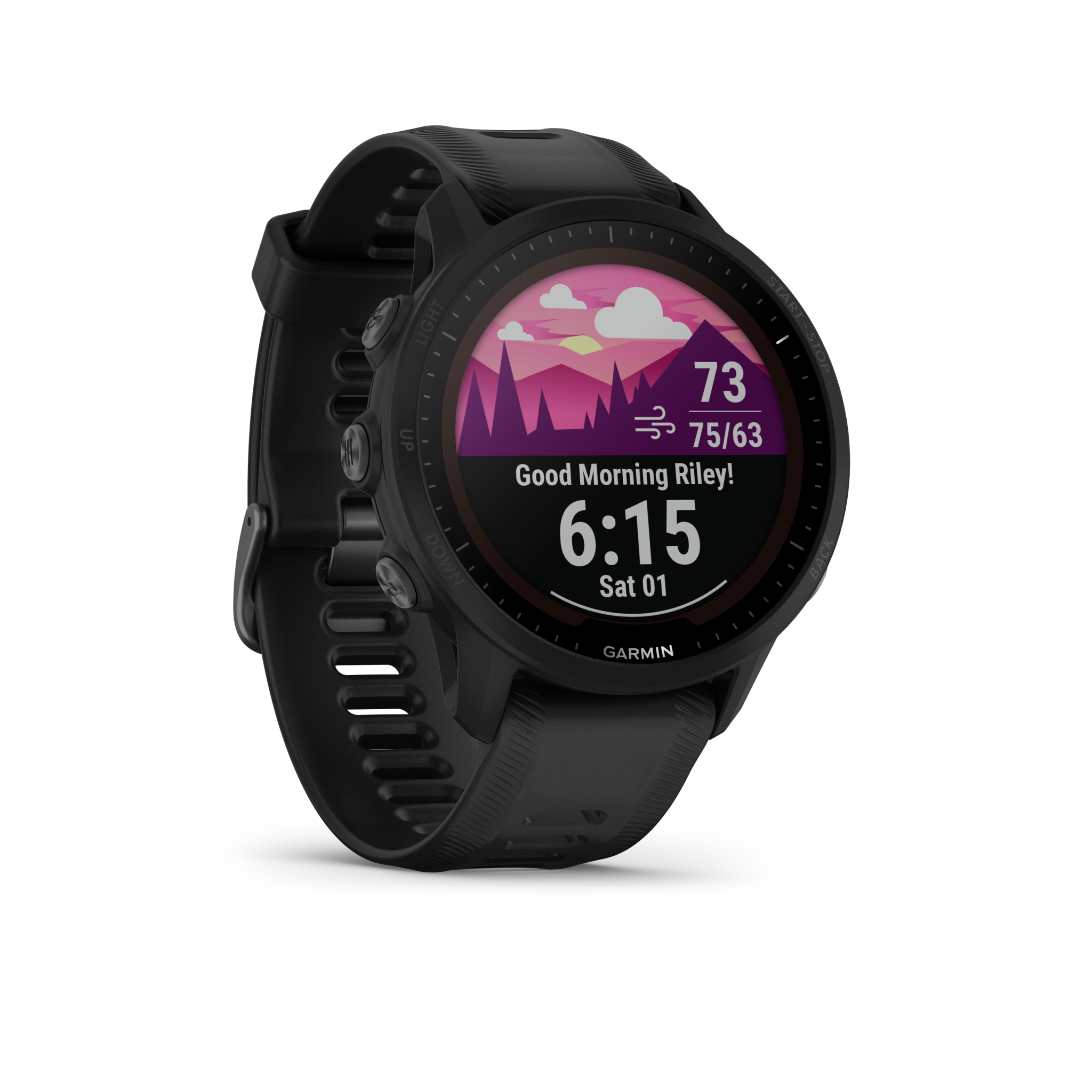

The Forerunner 955 Solar is a case of evolution, rather than revolution, but it’s an impressive multisport watch all the same.
It’s considerably cheaper than the Fenix 7 Solar and carries all of the features a triathlete would need, including activity tracking across the disciplines.
There’s also a heart rate variability feature, plus reliable GPS, full-colour mapping, a Training Readiness feature (which uses a score out of 100 to tell you how ready for exercise you are), a responsive touchscreen and the ClimbPro functionality seen on other Garmin watches. The latter allows you to see real-time information of your ascent.
Meanwhile, there’s space for up to 2,000 songs. Battery life is 20 days in smartwatch mode and up to 42 hours in full GPS mode.
It’s lighter than the Fenix 7 Solar, too, though is perhaps not quite as premium or robust as its more expensive cousin.
Verdict: Well-thought-out upgrade that lasts longer than ever. Read our full Forerunner 955 Solar review here.
Score: 88%
Apple Watch Ultra


With the launch of the Apple Watch Ultra, the tech behemoth is hoping to crack further into the sport market. But is the product good enough to do so.
You can read our full Apple Watch Ultra review for a detailed test, but in short, this looks like a very attractive proposition.
And that’ll especially be the case if you want something that is an accomplished smartwatch as well as a multisport proposition.
The 49mm screen is a pleasure to use during the swim, bike and run, and it’s wrapped in a titanium body.
It’s operated via touch screen and a dial and button on the right side of the watch, while on the left you’ll find an ‘action’ button and speaker.
Battery life is understandably less than most other watches in this list, with 36hrs of everyday use. In its ‘Ultra’ guise, the Apple Watch now also is able to offer up to 20hrs in GPS mode, seemingly making it Ironman-friendly.
Tri-specific features include a handy auto transition function, plus plenty of run metrics.
The watch also has pool and open-water modes, but there’s no power meter connectivity for cycling, nor any offline mapping or nav.
Verdict: Smartwatch and multisport computer combine to impressive – but not flawless effect.
Score: 81%
Polar Grit X Pro
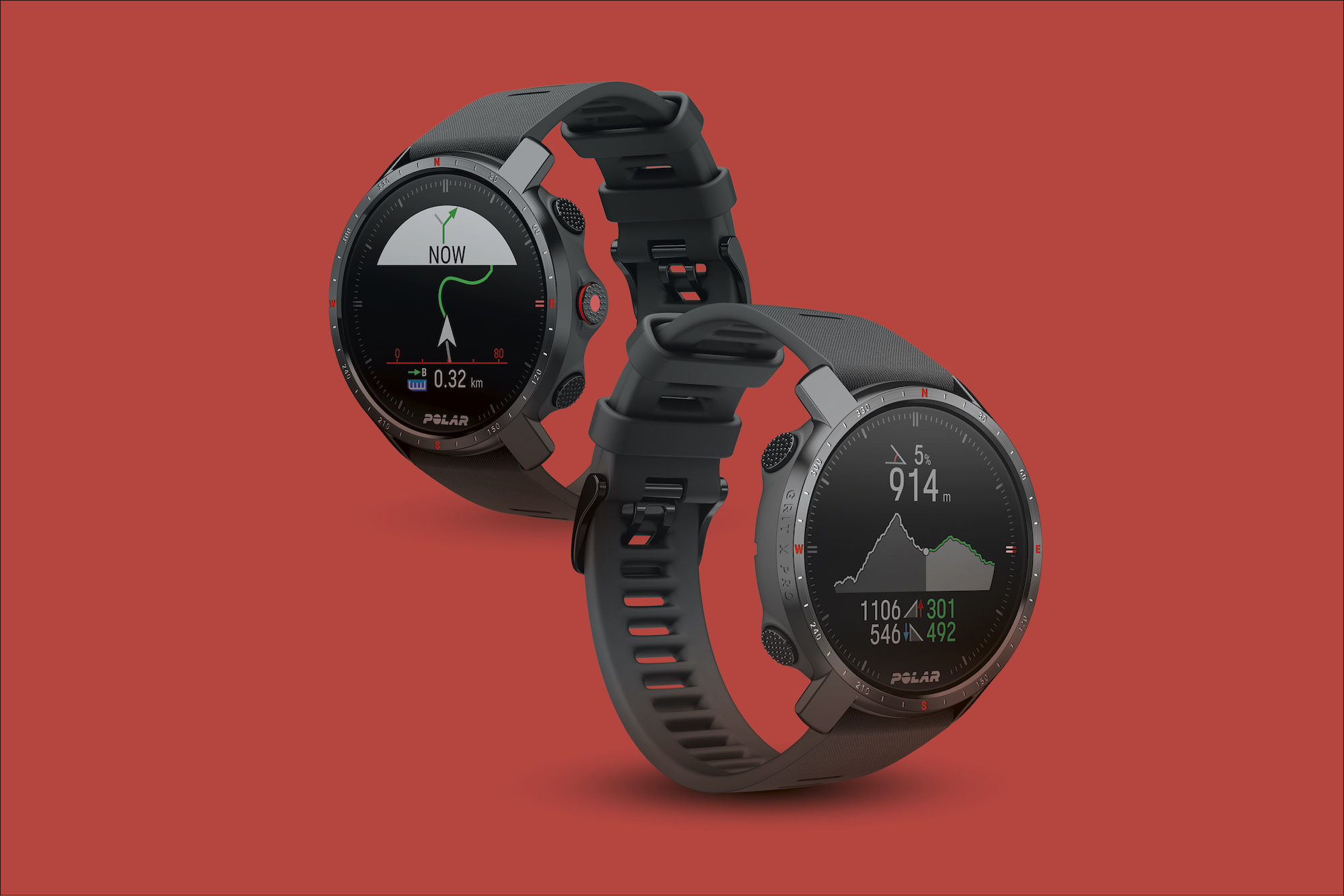

This sleek-looking watch is a fine offering from Polar. It comes with the usual gamut of features you’d expect from a triathlon watch, including multiple sport profiles (including multisport, open-water swimming, indoor training etc), plus reliable GPS.
Heart rate accuracy is decent too, though like many wrist-based monitors, can suffer somewhat when you crank up the speed on your runs.
Battery life offers plenty of juice for long-distance athletes, with 40hrs of life when used in GPS mode.
The screen isn’t quite as pin-sharp as some other market leading devices, but there is a wealth of great performance features, such as VO2 max tests, FTP tests, heart rate variability etc.
There’s also turn-by-turn navigation, though you only get a breadcrumb trail.
Usability is good, too, thanks to the combination of a touchscreen and buttons.
See our full Polar Grit X Pro review for more.
Verdict: A very good watch, but feature set is very similar to the Vantage V2 (reviewed below).
Score: 79%
Garmin Enduro


This fiscal beast of a watch comes in at nearly £700 for the steel version (tested) and £800 for the titanium version.
It’s expensive, but then when it came with a battery life that was greater than any sports watch to hit the market at the time it launched.
It’d give you roughly 80hrs in GPS mode; two months in smartwatch mode; and up to 300hrs in ‘max-battery GPS mode’.
This energy reserve’s down to a thin solar panel around the perimeter that’s purportedly 100% efficient at converting solar energy into chemical energy.
However, some familiar top-end Garmin features don’t make the cut, such as in-built music and topographical maps.
What there is, though, is the ultra-run feature, which logs the time you spend at aid stations; mountain-bike dynamics, that rather niftily rates trail difficulty and how smoothly you descend; and VO2max figures specific for trail running.
You can also measure your hydration, recovery, respiration and even your blood-oxygen status.
Verdict: Huge amount of features but so very, very expensive.
Score: 73%
Suunto 9 Peak Pro
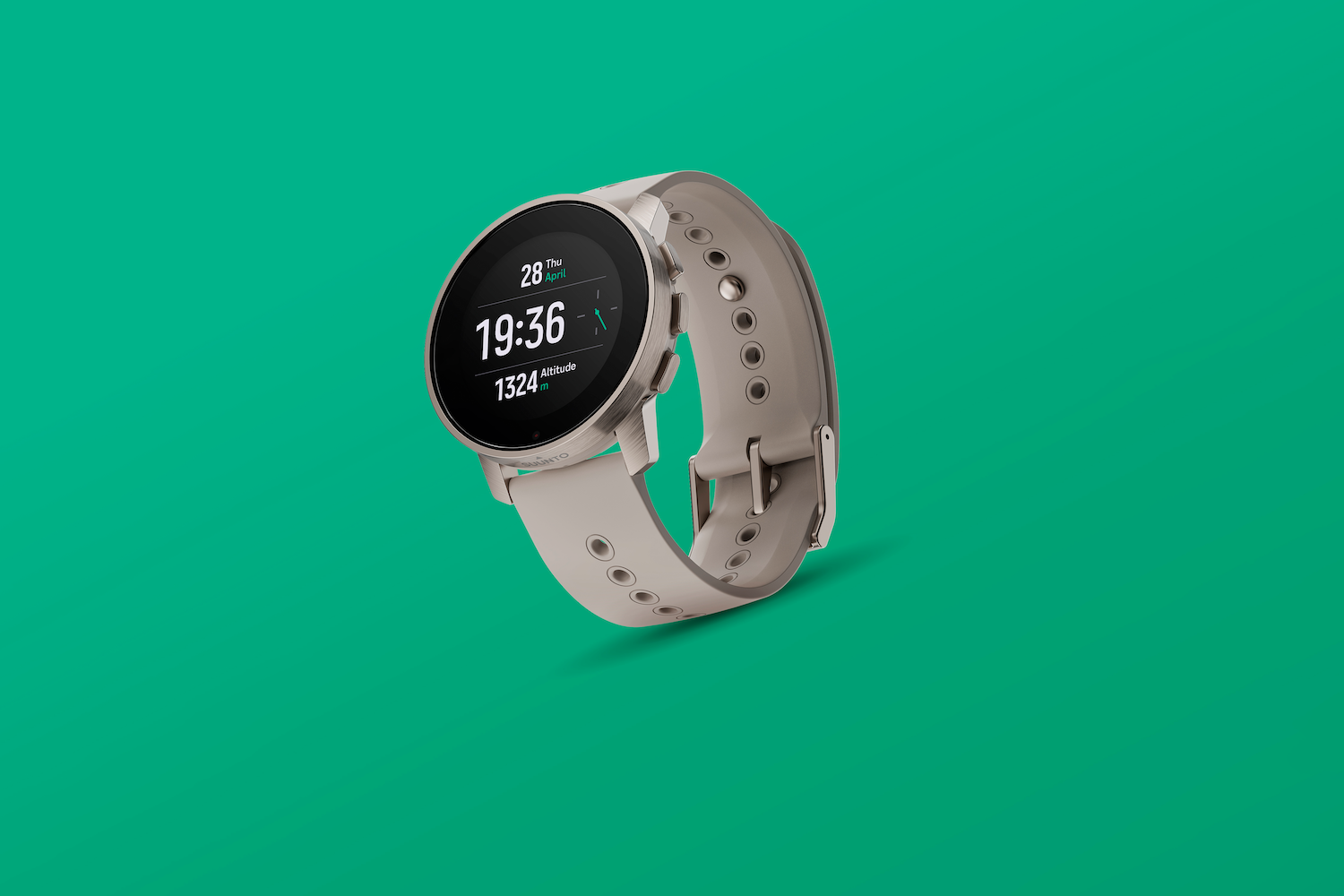

One of Suunto’s biggest launches in 2023, the 9 Peak Pro promises the brand’s ‘best-performing GPS yet’.
It certainly proved accurate in testing, even in built-up areas where multisport watches have struggled in the past.
This performance doesn’t drain battery life too much, either. You get up to 40hrs in GPS mode and up to 21 days with standard use.
Naturally, the watch comes with the normal gamut of sport profiles, with metrics including cycle and run power (if paired with a power meter).
Heart rate accuracy is decent, but like many it struggles in water. I was also left slightly disappointed by the basic turn-by-turn navigation and the screen, which felt too compact.
Verdict: Not a bad watch, but fails to reach the heights of some competitors. See our full Suunto 9 Peak Pro review for more.
Score: 77%
Wahoo Elemnt Rival
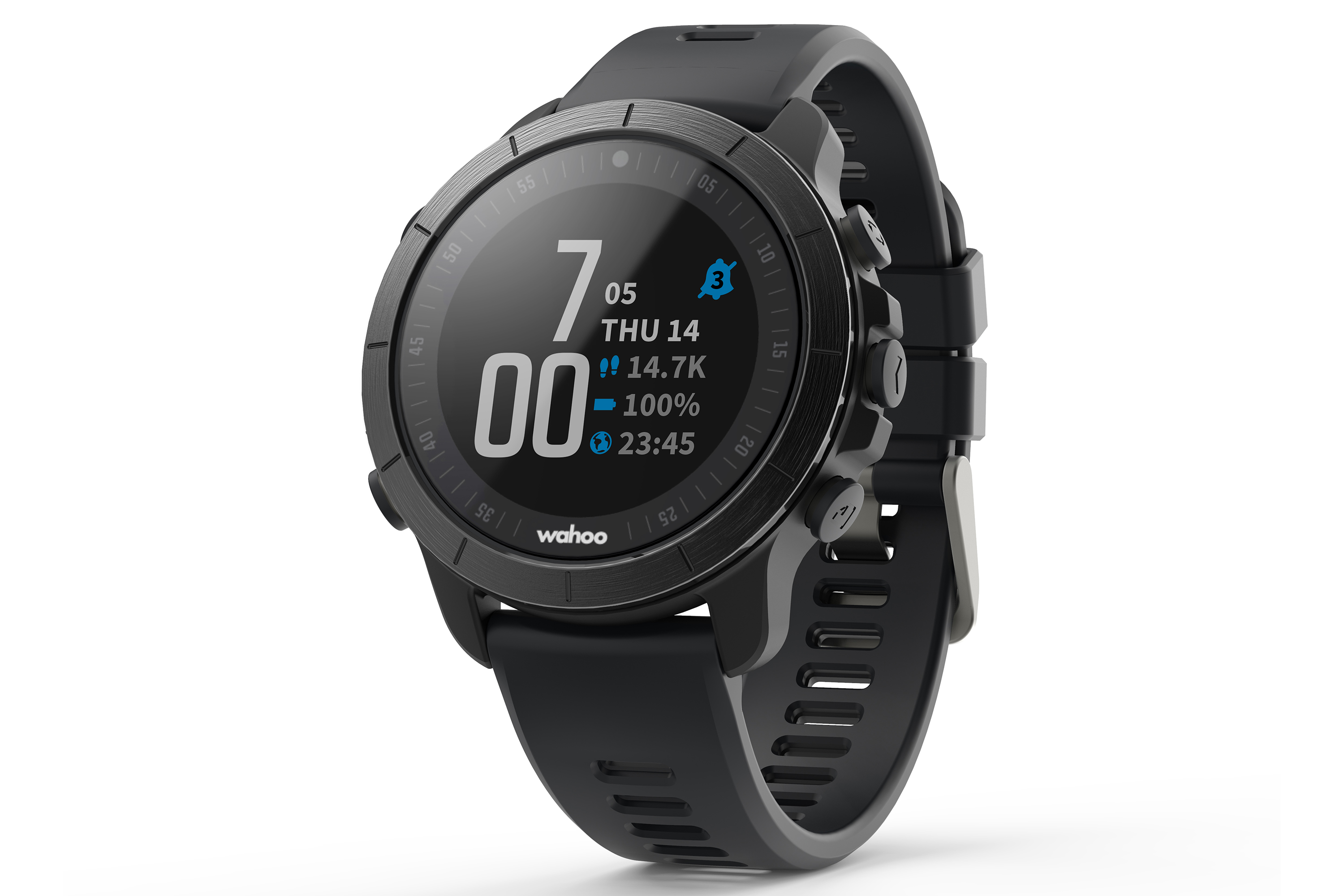

This is Wahoo’s first foray into the world of triathlon watches and it’s a divisive offering. At the end of last year, I interviewed Wahoo founder Chip Hawkins, an interesting character who you’ll hear more in an upcoming issue.
Chip highlighted that key to this debut was usability; they’d stripped out features they thought would be redundant to focus on ones that they thought most useful.
The key usable hit comes in the form of touchless transition tracking, where you don’t need to press any of the five buttons to move from discipline to transition and so on.
Instead, it gauges your body position to determine what discipline you’re on. It’s a great idea and generally works pretty well, but it was much quicker recognising the move from T2 to run than T1 to bike.
It covers up to 60 sports, but you could argue pays lip service to many. You see, in stripping things back, you lack the deep physiological and performance analytics of its rivals at the same price point.
Another complaint is that GPS is a little slow on the uptake in urban areas with tall buildings and the charging clip isn’t as authoritative as I’d like.
Despite that, I enjoyed its usability and ease of viewing on the fly. Plus, new software updates means you now get sleep tracking, extra swim modes and smartphone notifications.
See our full Wahoo Elemnt Rival review here.
Verdict: Usable but lacks features I’d expect at this price.
Score: 82%
Garmin Epix Gen 2
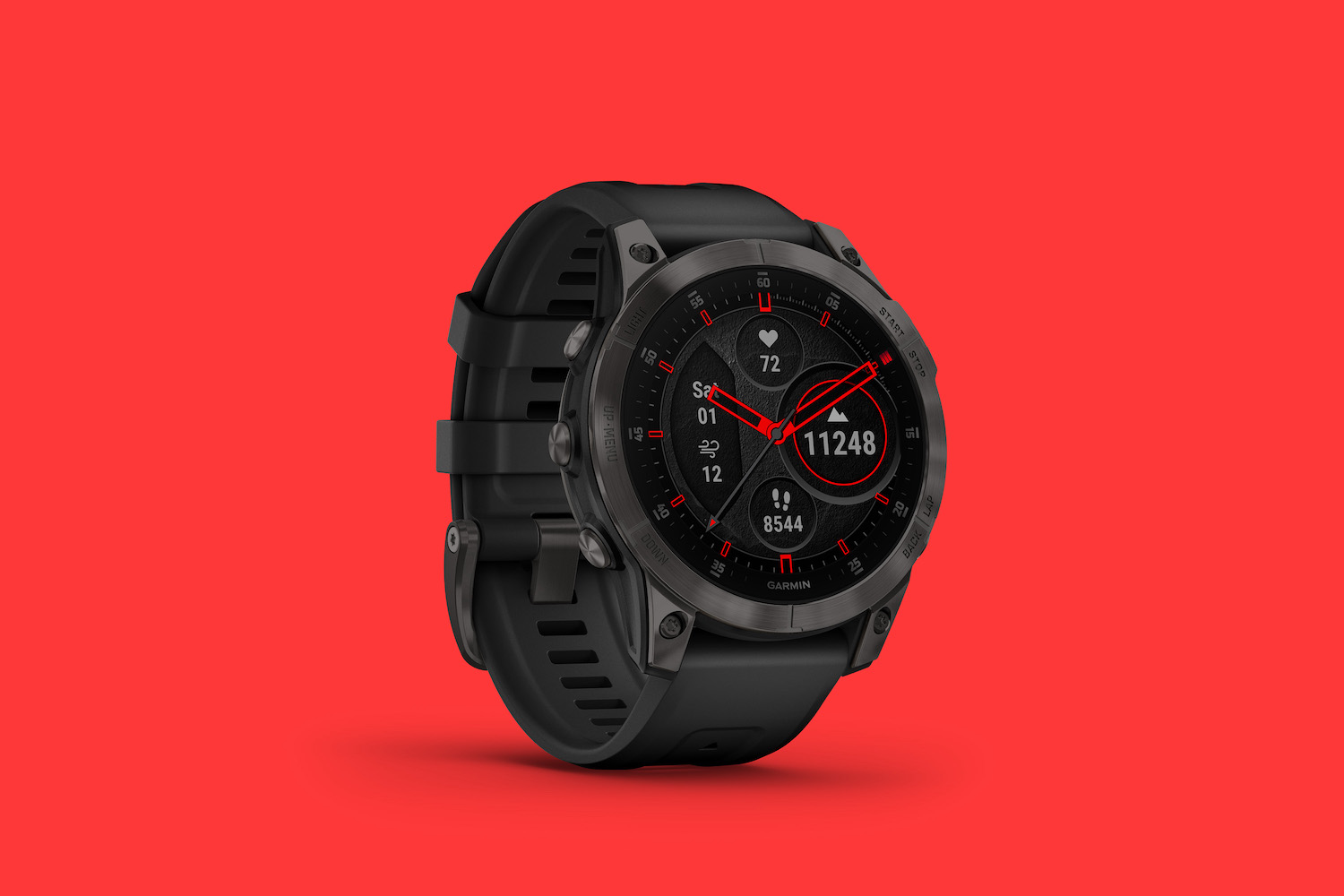

A beastly watch with a beastly price. The Epix Gen 2 offers top-of-the-range performance with all of Garmin’s performance features.
That includes multiple sport profiles (including tri), plus features such as Training Status, Training Load and Real-Time Stamina.
All of this comes in a rugged, large package, but there’s beauty with the brawn too. This largely comes in the form of the stunning AMOLED screen, which delivers incredible clarity, colour and brightness as well as a generous screen size.
Given that addition, battery life isn’t quite as substantial as some other range-topping offerings, numbering 42hrs in GPS mode and up to 16 days out of it.
See our full Garmin Epix Gen 2 review for more.
Verdict: Take the Fenix, add a brilliant new screen and you end up with the Epix Gen 2.
Score: 92%
Coros Apex Pro 2
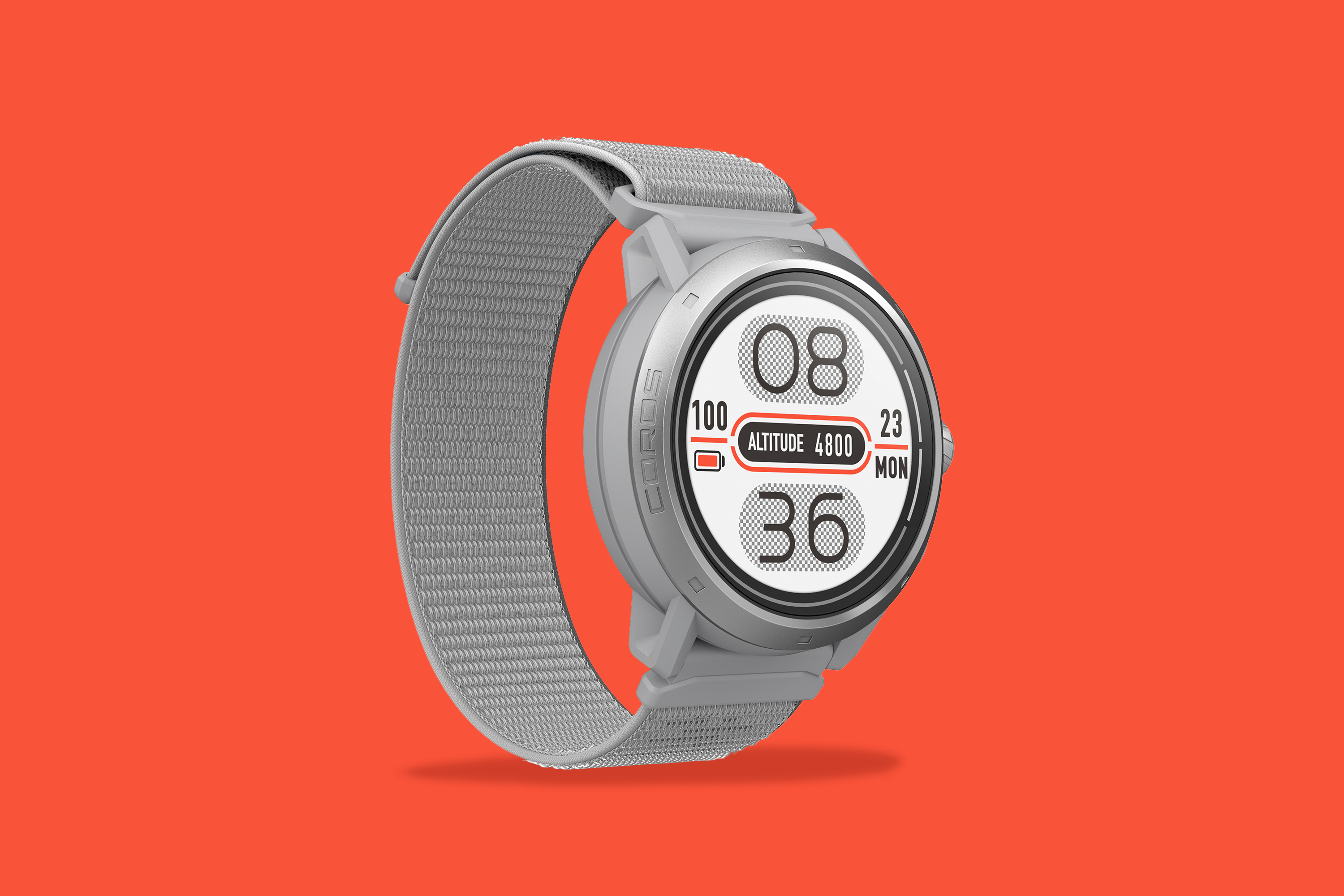

With a price tag of £449.99, the Coros Apex Pro 2 is facing off with Garmin’s Forerunner 955 and Polar’s Vantage V2.
The device’s multi-band results in very good satellite pick-up and retention, though it wasn’t entirely infallible on my test runs in the dense city streets of Bristol.
Heart rate accuracy is generally very good and you also get heart rate variability data, though you need to take this manually in the morning.
You can upload 30 different courses to the accompanying app, which can then be loaded onto the watch, while the map can be navigated by touch screen.
When not using the map, you’re limited to using the watch’s digital crown, which proved rather straightforward.
You also get a lot of training and performance related features, such as Training Status and Training Load, with a fantastic amount of data and insight available on the app.
Of course, there are dozens of activity profiles, including tri and open-water swimming, while battery life is up to a decent 75hrs in standard GPS mode or 26hrs when used. with multi-band GPS.
Verdict: An accomplished piece of tech, but doesn’t quite reach the heights of some rivals. Read our full Coros Apex Pro 2 review for more.
Score: 77%
Garmin Forerunner 745


Garmin’s Forerunner 745 is essentially a slimmed-down Forerunner 945. A key advancement is its coaching capabilities where you’re given detailed daily workout suggestions based on training load.
You can also tap into separate and pretty accurate cycling and running VO2 max measurements.
Like the Fenix 6 and 945, it comes with a Pulse O2 sensor to measure oxygen saturation of your blood. This isn’t lab-accurate but is useful for how well you’ve acclimatised to altitude. The coaching partner calculates how well you’ve adapted to the heat.
There’s also a whole host of performance features (such as ClimbPro, PacePro and race prediction times), which you can read more about in our full Garmin Forerunner 745 review.
There’s also music storage for 500 songs, while the screen’s very easy to use.
However, battery is down on the 945 – just 16hrs with GPS – and it lacks mapping.
Verdict: Superb but let down by battery – go for the 945 instead.
Score: 79%
Garmin Forerunner 945


Whereas the Fenix 6 offers a classier, more expensive package, the 945 is Garmin’s flagship ‘plastic’ multisport watch.
Its 2019 release saw many improvements over the 935, including the option to play music directly from the watch to your headphones via Bluetooth without your phone, improved battery life, a new optical heart rate sensor and a host of tracking and analysis upgrades.
The 945 adapts its feedback if you’re training in hot conditions or at altitude, and generally the training analysis is incredibly detailed.
After workouts you can see how your session benefitted you aerobically and anaerobically, with the Training Effect feature explaining how your fitness will be impacted by the session.
You’ll need to wear the watch almost constantly to maximise the Training Load feedback, but no matter how deep you go with this watch, it’s intuitive to use.
The screen is big and clear, and the mapping features are excellent, while the battery life is a whopping 36hrs in GPS mode (and I had no problem with satellite pick-up on land).
All the connectivity I’ve come to expect remain on the 945, including instant sharing to third-party apps and smart notifications.
Verdict: The most complete tri watch I’ve used to date at the time of testing.
Score: 92%
Read our full review of the Garmin Forerunner 945.
Polar Vantage V2
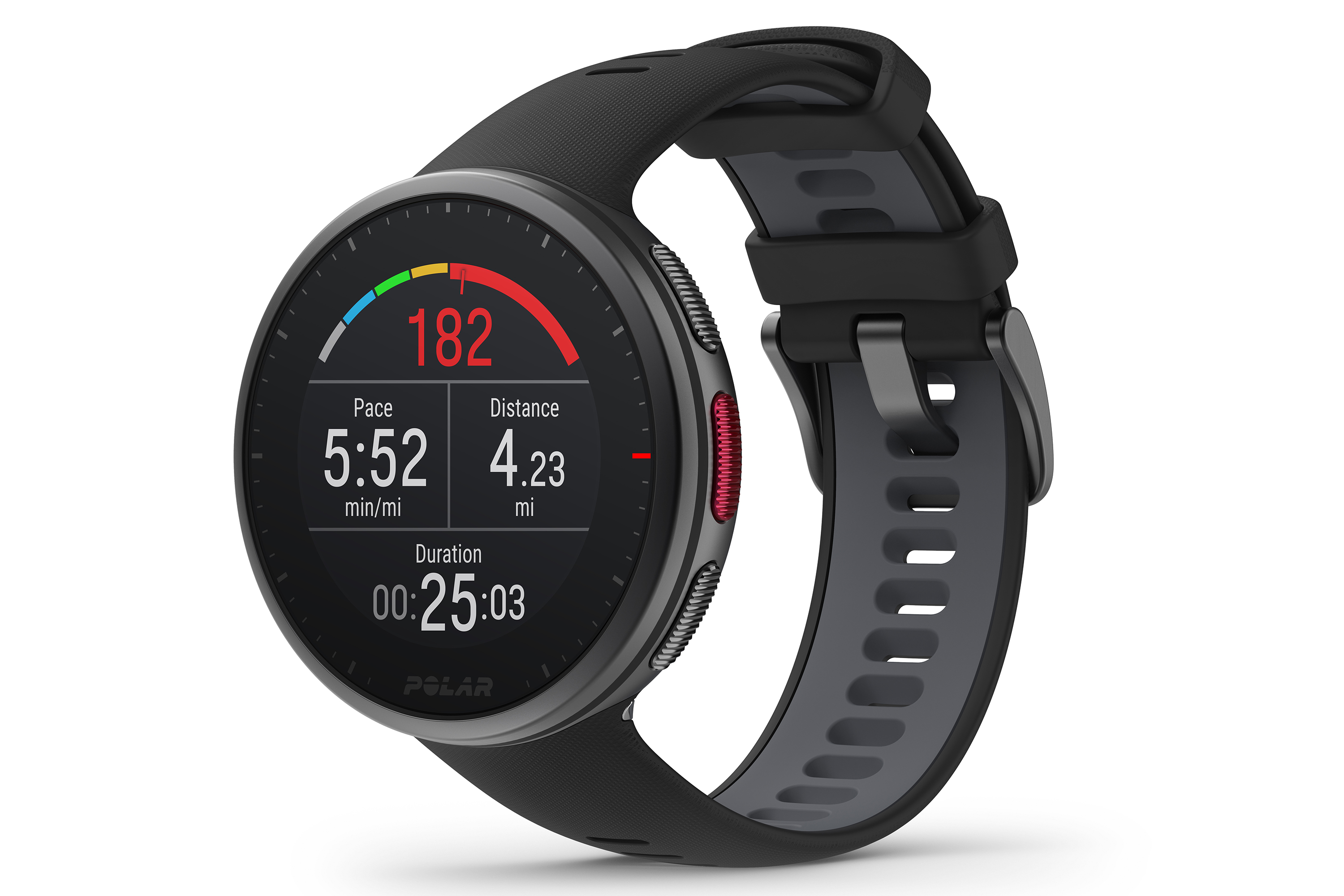

Polar’s original Vantage hit the market two years ago, with our resounding thumbs up concluding it was Polar’s best multisport watch to date. In the interim, the Finnish tech masters launched the Grit X, which proved arguably even better. So the V2 has a lot to live up to.
Unique to the V2 is a battery of fitness tests, from running to cycling to leg recovery, to gauge metrics like your aerobic capacity, functional threshold power and readiness to train. They’re useful, yet measurements like VO2 max are often calculated in the background rather than requiring a standout day in your training plan.
You’re also given neat music controls to tap into streaming services such as Spotify, though this is via your phone rather than the V2. Its battery life is impressive, too, at around 40hrs in full GPS mode.
They’re positive additions but the main upgrades over the V1 are taken from the Grit X, including Hill Splitter, offering you detailed performance about your ascents and descents; FuelWise, to guide you on beneficial factors like carbs per hour; and Energy Sources, to determine how much of your session tapped into fats and carbohydrates.
GPS is accurate; the optical heart-rate sensor’s not bad, either, but the usual caveats apply about lagging on high-intensity efforts.
You can also route plan via signing up to Komoot, measure sleep and chart running power, plus tap into the Recovery Pro feature, though that requires a£40 spend on an HR strap.
All in all, it’s impressive but V1 and Grit users would find it hard to justify the spend.
Verdict: All you need but underwhelms as a sequel to the v1.
Score: 78%
Best triathlon watches for those on a budget
Coros Pace 3
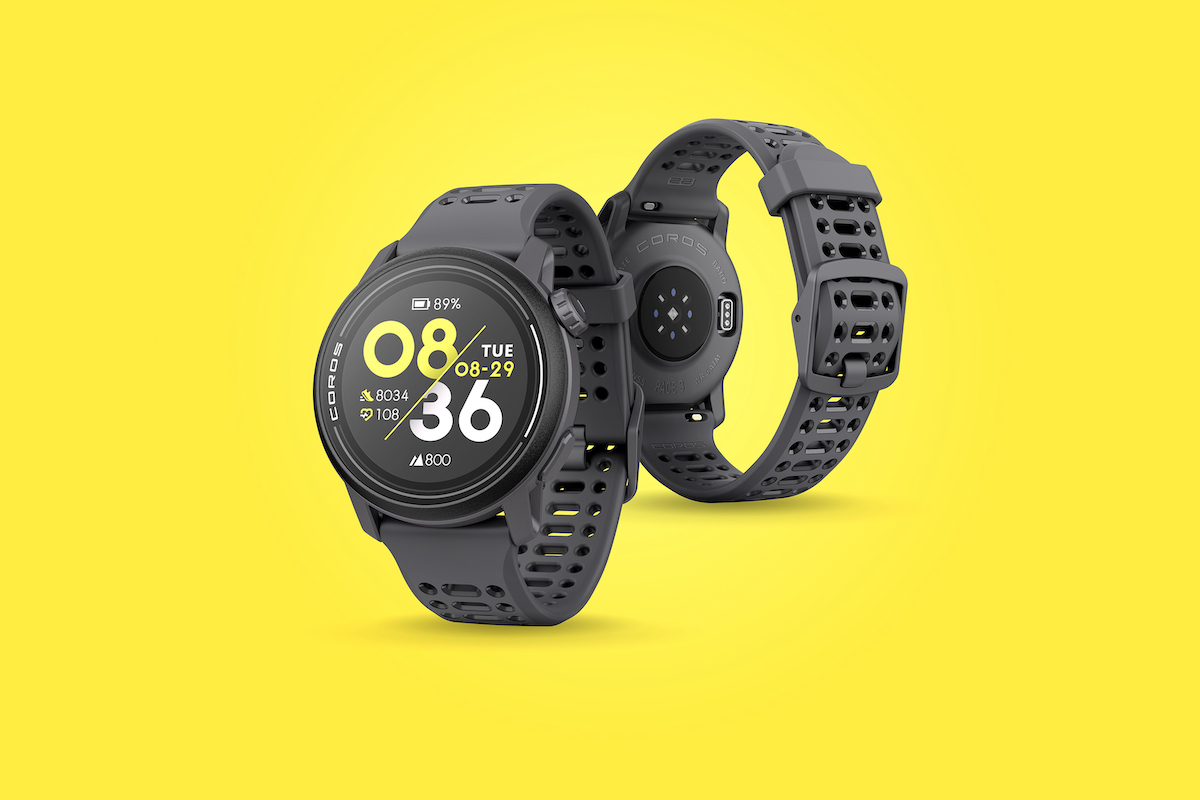

The third iteration of the Coros Pace range is another impressive launch and good news for athletes that don’t want to spend hundreds on their kit.
Version three retains the same single button and dial, but also adds a touchscreen, which is a nice touch.
The 30g weight and small form factor (1.2” display) ensures it’s hardly noticeable on the wrist, too.
The LCD screen is decent enough, while a battery life of 38 hours in GPS mode or 30 days in standard mode is pretty damn impressive.
There’s no maps, but you do get turn-by-turn instructions and a breadcrumb trail when navigating. I did find it a bit of a struggle to create routes in the Coros app, though.
There are 20 activity profiles to choose from, including triathlon and a mix of swim, bike and run options, and you even get 4GB of onboard storage for music.
Read our full Coros Pace 3 review for more.
Verdict: Coros does it again – another budget masterpiece.
Score: 86%
Coros Pace 2
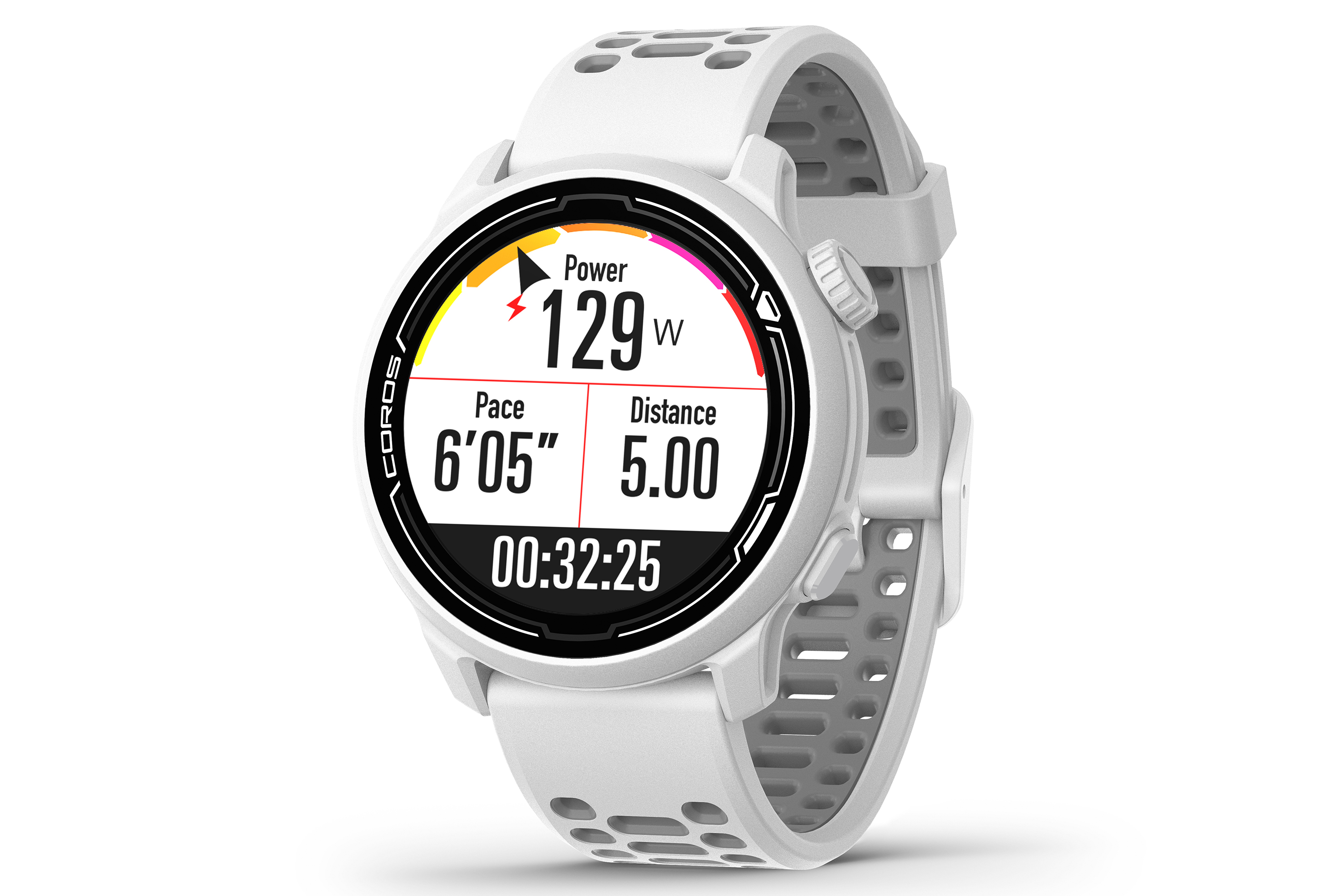

There may be a third version of the Coros Pace on the market now, but the second edition is still on sale and represents very good value.
The Pace 2 is £70 cheaper than the original, which is good news for both Coros and triathletes as our model 1 review concluded: “Drop £50 and this’d be an absolute winner.”
When it comes to upgrades, Coros inform us its processor is 1.5 times more powerful, it has five times more RAM and four times more storage. That means a whole host of new features, plus a 20% increase in battery life, up to 30hrs in full GPS mode.
These include tapping into running-power metrics, which I can only see growing in popularity; the addition of training plans; and a neat night-mode that automatically enables backlight during workouts between sunrise and sunset.
It’s also frighteningly light at 29g – they claim the lightest in the world and I can’t argue – and drops from the four-button original to a single button and dial.
There’s a strength training programme, which could come in useful for home workouts this off-season. It includes over 200 exercises and autodetects your bodily movements via sensors and accelerometers to calculate effort output.
Things that have remained are the key ones – that this is still a full-on multisport watch featuring tri mode. So all the usual metrics related to swim, bike and run, many deriving from the solid GPS and optical HR measurer. All syncing nicely to the usable Coros app for further analysis.
With many usable features at such a good price, this is the watch Coros has been building up to.
Verdict: Coros’ best yet and a staggering watch for under £200.
Score: 90%
Garmin Forerunner 255S
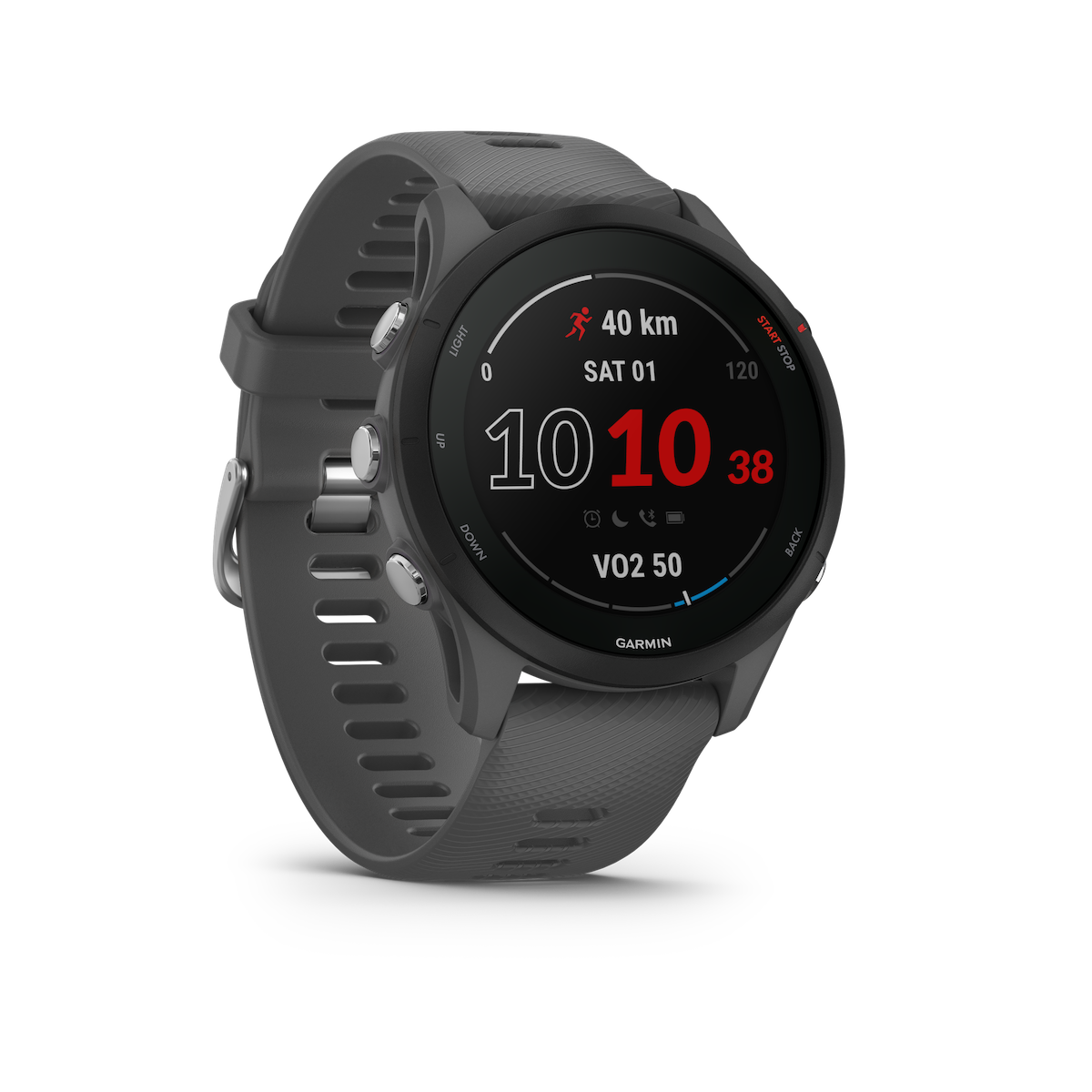

Admittedly, it feels odd to be including a watch that costs £299.99 in a ‘budget’ section of this roundup, but among its loftier-priced siblings, the Forerunner 255S is one of the cheapest true multisport watches you can buy from Garmin (along with the Instinct 2, which can be had for the same price in its non-solar guise).
My test model came in the smaller 40mm size and sports a battery life of 12 days in smartwatch mode and 26 hours in GPS mode – plenty for a full distance triathlon.
The small size feels light, nimble and unobtrusive on the wrist, yet still clearly displays information thanks to the bright colour screen (there’s no touchscreen option here).
Feature-wise, there’s activity tracking across the disciplines, including a multisport setting, plus a race predictor for running times, suggested workouts and heart rate variability, which gives you an indication of how ready you are to train and race. The latter was a useful addition, though it didn’t match how I felt 100% of the time.
You also get regular Garmin features such as Training Status, Training Effect, Performance Condition and Recovery Time.
Meanwhile, GPS and heart rate proved as reliable as I’ve come to expect from Garmin.
Verdict: Great features in a small package, but cheaper, comparable options on the market from other brands. Read our full review of the Forerunner 255S here.
Score: 84%
Polar Vantage M
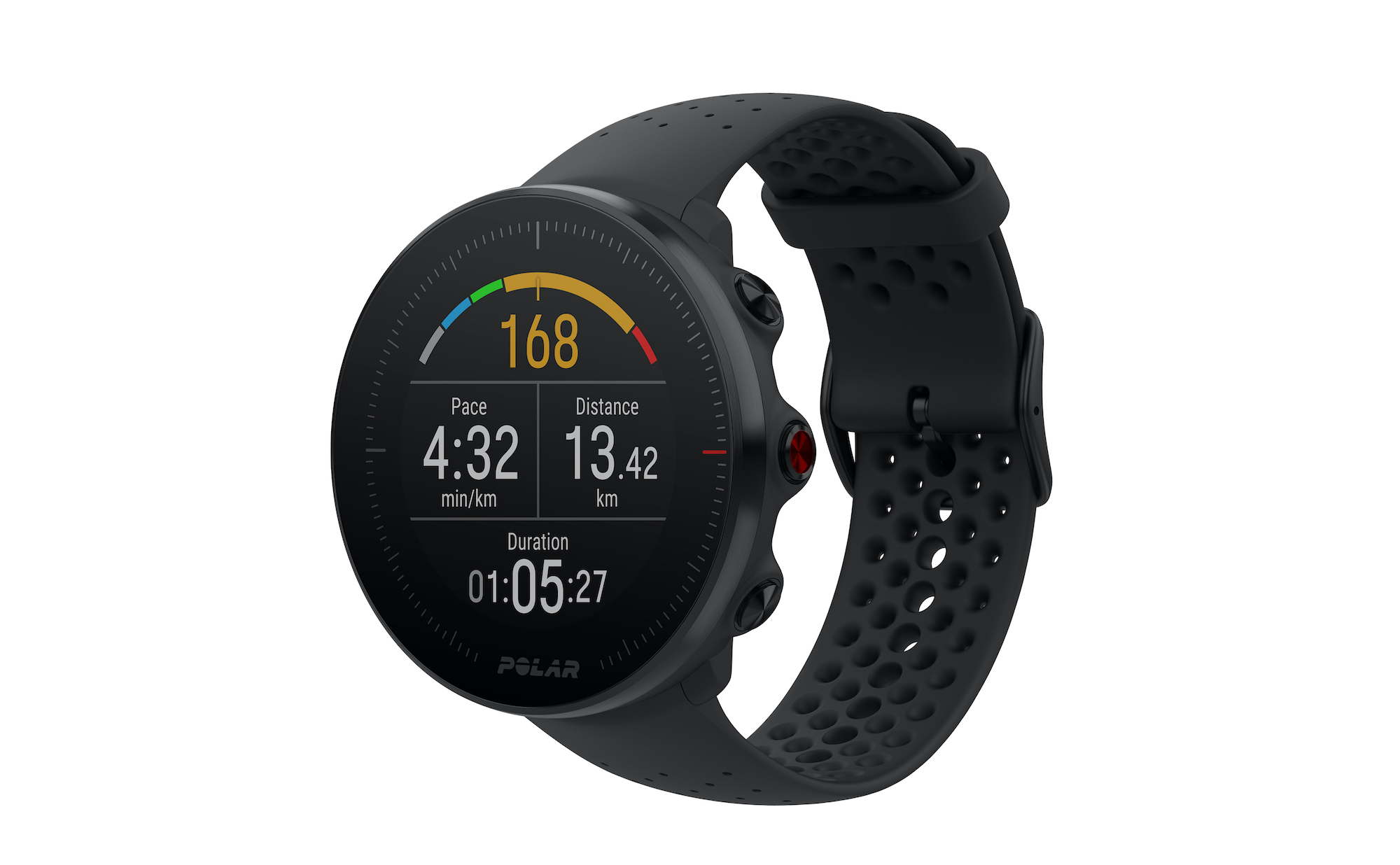

The Polar Vantage M qualifies for this sub-£250 test by a solitary pound, though note that the M2’s also now available for just £20 extra.
For that, you receive smartphone widgets, weekly summary and fuelling reminders. But the M’s core, performance-boosting features are impressive, including an optical heart-rate sensor that smooths out anomalies by reassessing in 60sec blocks.
Cardio Load’s a plus point, too, calculating your training effort over time to give an easy-to-quantify load based on your rate of perceived exertion out of 10.
A huge 130 sports are covered including swim (pool and open-water), bike and run, though GPS pick-up and retention could be better. All the features are navigated via five crisp buttons.
Verdict: A worthy contender that’s easy to use and comes with ample metrics.
Score: 83%
How we tested
The watches featured here have been tested by 220 Triathlon‘s expert gear testers. Between them, they have a combined 50 years of experience testing triathlon, sport and outdoor kit.
Each watch has been tested over a period of at least a month, with many being worn and used for much longer than that.
During the test period, we’ve taken the watches for multiple swims (in the pool and open water), bike rides and runs, varying intensity across sessions to judge how the products coped with changes in heart rate.
Tests have taken place in built-up urban areas, open countryside and on forest trails to thoroughly test GPS pickup and accuracy, with tracks compared to other watches and scrutinised afterwards on a map.
Meanwhile, heart rate accuracy has been tested against a baseline provided by our regular chest-based heart rate monitor.
Throughout the test period, we’ve also analysed battery life, usability, how good the accompanying app is, additional fitness features and how well the watch fits into everyday life.
Find out more about what we look for when testing triathlon watches in the sections below.
What to look for in a triathlon watch
1. Activity tracking
Ultimately, this is the most important aspect of any multisport watch because, well, it’s what makes your watch a multisport watch and not a fitness band.
Metrics for swim, bike and run are, of course, essential. When it comes to the swim, the ideal is a watch that both measures pace, type of stroke, stroke rate, speed and distance covered indoors and outdoors.
The bike should include the basics of speed and distance plus, ideally, offer cadence and power-meter connectivity.
As for the run, pace per kilometre or mile’s a useful one. There are also many advanced run metrics that are becoming commonplace like stride rate, ground contact time and even how much your body moves (oscillation). How important this next-level analysis is to you depends on your goals and lifestyle.
Outdoor activity features like altitude and mapping will also appeal to many.
2. Performance features
Depending on the manufacturer, some watches also come with performance features that are designed to help you reach your goals while avoiding overtraining.
This can include things such as your training status, your training load, readiness to train, remaining stamina and recovery time. Many watches now also come with suggested workouts.
3. Health-related features
Sleep is arguably the go-to health-tracking feature of a multisport watch but be aware that their accuracy is not scientifically proven. For many, sleeping with a wrist strap on isn’t the most sleep-inducing experience, either.
An increasing number of watches, like the Apple Watch Ultra, help you to track your menstrual cycle, while many monitor stress. Both are useful in planning your sessions but, like many health-tracking features, how scientifically proven the results are remains to be seen.
4. GPS


A built-in GPS (Global Positioning System), instead of an accelerometer that measures movement, will give more accurate real-time tracking information, with many GPS units informing you of the direction and distance back to your starting position.
Not all watches come with the same level of GPS accuracy, though. Watches that come with GPS + GLONASS or GPS + GALILEO modes will burn through battery life quicker than standard GPS, but they’ll also provide access to more satellites, meaning greater accuracy and quicker pickup.
5. Heart rate monitor
A heart rate monitor will allow you to establish your own training zones to perform at your own best pace. A chest strap is more accurate than the wrist-based optical heart rate (OHR), but many athletes prefer the comfort and simplicity of OHR.
6. Connectivity and syncing
We can’t think of a quality multisport watch on the market that doesn’t offer the option to sync to its own app; in fact, most advise you to download the app on watch set-up as it’s easier to set the time, customise the watch face and much more.
Every app will be a place to analyse your sessions and track progress, with usability and level of detail varying across the board.
Many also offer the ability to import workouts to popular third-party apps like Strava and TrainingPeaks.
Syncing tends to be via Bluetooth, though some offer ANT+.
7. Usability
Multisport watches offer button and/or touch screen usability to scroll through the watch’s main features.
Check that the touchscreen doesn’t have a history of losing contact when scrolled with sweaty fingers or in the rain, that it can be switched off if you want to stick to buttons and that data is displayed as clearly as possible.
Larger watch faces and bright AMOLED screens can help boost visibility, but also push up the price and bulkiness of the watch.
8. Battery life
Most models require USB charging via a charger bespoke to that manufacturer, usually clipping onto the side or back of the unit.
Battery life while tracking an activity can range from 5hrs to 20+ depending on how many features (i.e. GPS) you’re using. If you’re only racing over shorter distances, you may not need a chunky watch that offers the best-in-class battery life.
How do I choose the right triathlon watch for me?
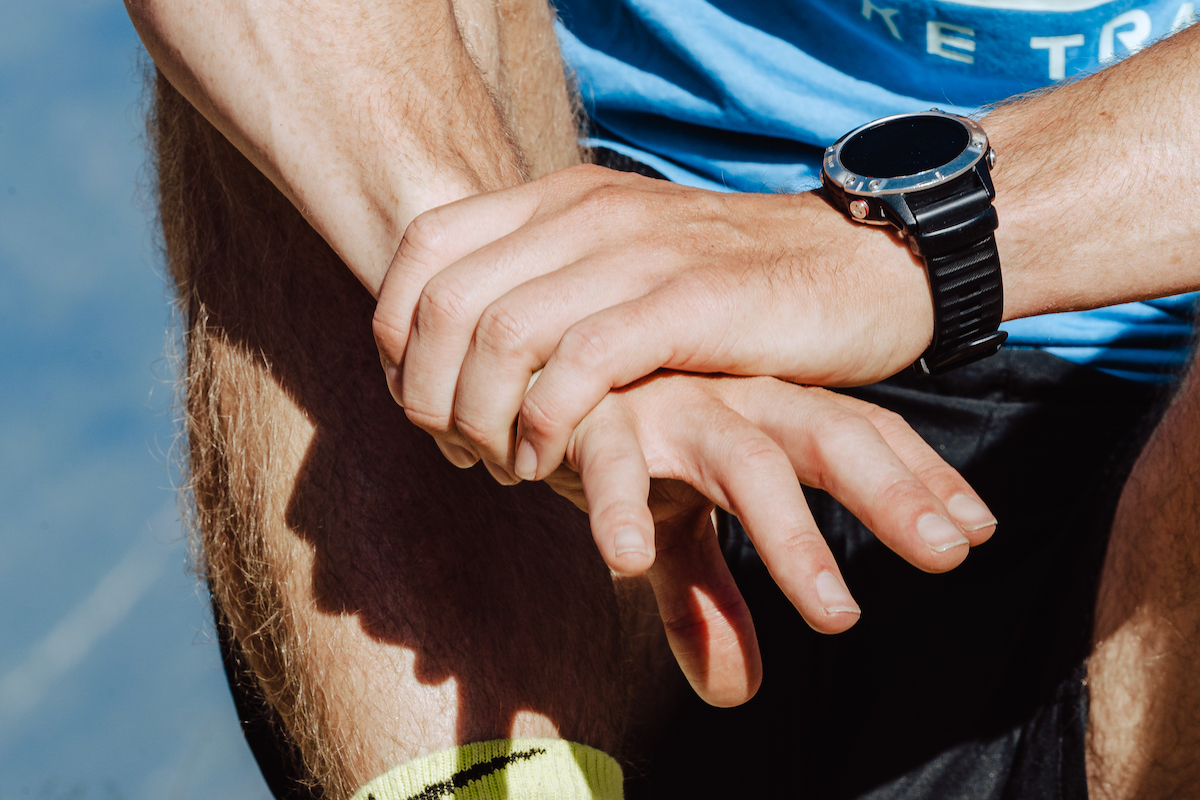

Be honest with what you want out of a watch. Just distance, pace, heart rate and time? Go budget or mid-level. Advanced training information? Go mid-level or advanced.
Just remember that a long feature list inevitably results in a higher price. Don’t be blinded by a setlist that, deep down, you won’t use.
Which triathlon watch is best for Ironman?
Battery life when you’re using many draining modes, including GPS and heart rate, is vital and must cover at least up to the 17hr Ironman cut-off.
The higher the battery life when using GPS, the better. A watch that connects to a power meter’s a fine idea, too.
Good options includes Garmin’s Fenix and Enduro ranges, the Forerunner 955 or 965, Suunto’s 9 Peak Pro, Polar’s Grit X Pro or Coros’ Pace to and Apex Pro 2.
Are wrist-based heart rate readings reliable?
Before answering that, it’s relevant to understand how they work. Wrist-worn heart rate monitors shine a green pulsing light into your blood vessels. The LED light penetrates your skin and reflects off your blood.
The degree to which your blood absorbs or reflects light varies according to whether your heart is contracting (beating) or relaxing in between beats.
When your heart contracts, it pumps blood to every part of your body, including your wrist. The greater bloodflow in your wrist causes more light to be absorbed, rather than reflected, from the LED light.
Studies have shown that while these are fairly accurate at steady speeds, as workout intensity increases they can begin to suffer. This is simply due to the movement of the device against the skin.
Moisture doesn’t help, either, which is why they’re not great in water. But they do have their place and, as technology improves, so hopefully will the accuracy of those readings in these data-detrimental situations.










